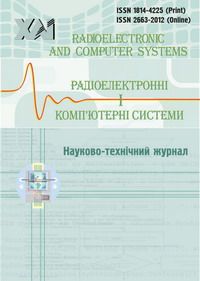New method for video stream brightness stabilization: algorithms and performance evaluation

View/
Date
2023Author
Bilozerskyi, V.
Dergachov, K.
Krasnov, L.
Zymovin, A.
Popov, A.
Metadata
Show full item recordAbstract
Subject of study. In this paper, for the first time, an original method for estimating the change in the brightness of video data under the influence of changes in the lighting conditions of the scene and external noise is proposed. Algorithms for stabilizing the brightness of video data are also proposed. An objective assessment of the quality of video data pre-processed is given. The purpose of the research is to create a methodology for analyzing the variability of video data parameters under the influence of negative factors and to develop effective algorithms for stabilizing the parameters of the received video stream. The reliability of the method is tested using real video recordings pictured through various conditions. Objectives: To determine the most universal, resistant to external influences, and informative indicator necessary for an objective assessment of the quality of video data under various shooting conditions and scene lighting features; develop and programmatically implement algorithms for stabilizing video parameters based on modern programming tools. Research methods. Statistical analysis and pre-processing of video stream parameters as a random spatio-temporal process, algorithms for processing video data by digital filtering, and adaptive stabilization of video stream parameters. Research results. It has been proposed and experimentally proven that the optimal indicator of video stream quality is the average frame brightness (AFB). An algorithm for spatiotemporal processing of video data is proposed that generates a sequence of AFB values from the original video stream. The paper also proposes digital algorithms for filtering and stabilizing the brightness of a video stream and investigates the effectiveness of their application. Conclusions. The scientific novelty of the results obtained lies in a new method for analyzing and evaluating the parameters of video surveillance data and algorithms for filtering and stabilizing the brightness of the video stream. The performance of the proposed algorithms has been tested on real data. The algorithms are implemented in the Python software environment using the functions of the OpenCV library. Предмет дослідження. У цій статті вперше запропоновано оригінальний метод оцінки зміни яскравості відеоданих під впливом зміни умов освітленості сцени та зовнішніх шумів. Також запропоновано алгоритми стабілізації яскравості відеоданих. Дано об’єктивну оцінку якості відеоданих за результатами попередньої обробки. Метою роботи є створення методології аналізу мінливості параметрів відеоданих під впливом негативних факторів та розробка ефективних алгоритмів стабілізації параметрів отриманого відеопотоку; дається ретельна перевірка достовірності методу на реальних відеозаписах, здійснених у різних умовах. Завдання: Визначити найбільш універсальний, стійкий до зовнішніх впливів та інформативний показник, необхідний для об’єктивної оцінки якості відеоданих за різних умов зйомки та особливостей освітлення сцени; розробити та програмно реалізувати алгоритми стабілізації параметрів відео на основі сучасних засобів програмування. Методи дослідження. Статистичний аналіз та попередня обробка параметрів відеопотоку як випадкового просторово-часового процесу, алгоритми обробки відеоданих шляхом цифрової фільтрації та адаптивної стабілізації параметрів відеопотоку. Результати досліджень. Запропоновано та експериментально доведено, що оптимальним показником якості відеопотоку є середня кадрова яскравість (AFB). Запропоновано алгоритм просторово-часової обробки відеоданих, який генерує послідовність значень AFB з вихідного відеопотоку. У роботі також запропоновано цифрові алгоритми фільтрації та стабілізації яскравості відеопотоку та досліджено ефективність їх застосування. Висновки. Наукова новизна отриманих результатів полягає в новому методі аналізу та оцінки параметрів даних відеоспостереження, алгоритмах фільтрації та стабілізації яскравості відеопотоку. Продуктивність запропонованих алгоритмів перевірено на реальних даних. Алгоритми реалізовані в програмному середовищі Python з використанням функцій бібліотеки OpenCV.
